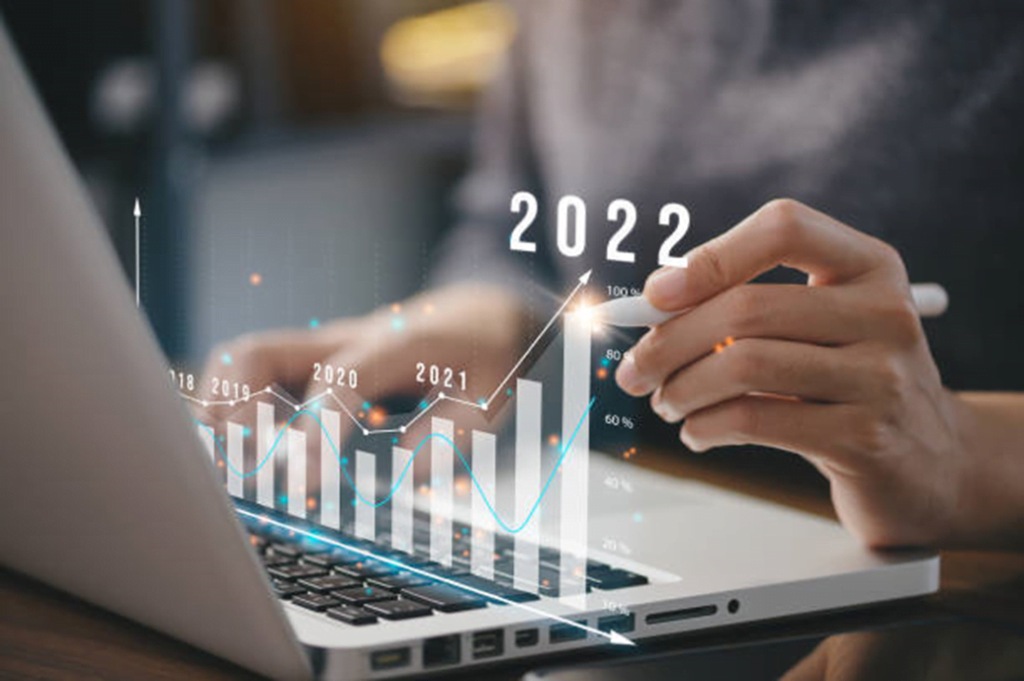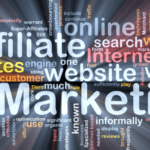
Performance Marketing Meaning
Performance marketing is a digital marketing strategy that’s driven by results. It’s ideal for companies that are looking to reach their audience at scale, because payment is based on how users interact with the content.
What is Performance Marketing?
Performance as Marketing
Performance marketing refers to a form of digital marketing in which brands only pay marketing service providers after their business objectives have been met or when specific actions have been taken, such as a click, sale, or lead. In other words, it is performance-based marketing.
What are the benefits of performance marketing?
The Benefits of Performance Marketing
- It’s trackable and measurable. In performance marketing, advertisers and marketers only pay for successful transactions
- Performance marketing extends your advertising reach
- It helps diversify your revenue stream
- Affiliates add innovation and creativity to your marketing
Importance of performance marketing
- Analytics and attribution are increasingly more available for sophisticated brands across industries and sectors. Subsequently, getting a solid ROI for both marketing budgets and their corresponding channels is increasingly important.
- Therefore, having an agency that specializes in delivering results is a must. It’s a must because through the successful usage of analytics, attribution and channels, brand marketing managers can both report real results in real time as well as take credit for the traffic and sales they drive.

Performance Marketing Agency
Performance Marketing agencies focus and specialize in pay-per-action digital marketing strategies that result in conversion, which can be an inquiry for lead generation or a sale for eCommerce. Businesses work closely with an agency for recommendations and solutions to meet their specific goals
Example of performance marketing
Google search results – Performance ads also appear on the Google search engine results page, just above the organic results. They’re tailored to the keywords used by searchers, and—apart from being labeled as ads—look just like the organic search results.
Performance Marketing Strategy
How Performance Marketing Works?

There are four common pricing models used in the online performance advertising market.
- CPM (cost-per-mille, or cost-per-thousand) pricing models charge advertisers for impressions, i.e. the number of times people view an advertisement. Display advertising is commonly sold on a CPM pricing model. The problem with CPM advertising is that advertisers are charged even if the target audience does not click on the advertisement.
- CPC (cost-per-click) advertising overcomes this problem by charging advertisers only when the consumer clicks on the advertisement. However, due to increased competition, search keywords have become very expensive. A 2007 Doubleclick Performics Search trends Report shows that there were nearly six times as many keywords with a cost per click (CPC) of more than $1 in January 2007 than the prior year. The cost per keyword increased by 33% and the cost per click rose by as much as 55%.
- Cost per lead (CPL) pricing models are the most advertiser friendly. In 2007, an IBM research study found that two-thirds of senior marketers expect 20 percent of ad revenue to move away from impression-based sales, in favor of action-based models within three years. CPL models allow advertisers to pay only for qualified leads as opposed to clicks or impressions and are at the pinnacle of the online advertising ROI hierarchy.
- In CPA advertising, or Cost Per Acquisition, advertisers pay for a specific action such as a credit card transaction (also called CPO, cost-per-order).
Choosing the pricing Models:
Advertisers need to be careful when choosing between CPL and CPA pricing models.
- In CPL campaigns, advertisers pay for an interested lead – i.e. the contact information of a person interested in the advertiser’s product or service. CPL campaigns are suitable for brand marketers and direct response marketers looking to engage consumers at multiple touch-points – by building a newsletter list, community site, reward program or member acquisition program.
- In CPA campaigns, the advertiser typically pays for a completed sale involving a credit card transaction. CPA is all about ‘now’ – it focuses on driving consumers to buy at that exact moment. If a visitor to the website doesn’t buy anything, there’s no easy way to re-market to them.
Metrics
- Various types of measurable action may be used in charging for performance-based advertising:
- Many Internet sites charge for advertising on a “CPM” (cost per thousand) or cost per impression basis. That is, the advertiser pays only when a consumer sees their advertisement.
- Internet sites often also offer advertising on a “PPC” (pay per click) basis. Google’s AdWords product and equivalent products from Millennial Media, Yahoo!, Microsoft and others support PPC advertising plans.
- A small but growing number of sites are starting to offer plans on a “Pay per call” basis. The user can click a button to place a VoIP call, or to request a call from the advertiser. If the user requests a call, presumably they are highly likely to make a purchase.
- Finally, there is considerable research into methods of linking the user’s actions to the eventual purchase: the ideal form of performance measurement.
Must Read: THE ROLE OF MARKETING IN STRATEGIC PLANNING
How to Measure Performance Marketing?
- A defining element of performance marketing is ROI (return on investment). Every activity and action is measured, reported and analyzed against pre-defined KPIs. This is how the campaign results can be understood and optimized towards improving performance.
- Measurable ROI is the key to successful digital marketing, so it’s important to track it regularly. There are loads of performance optimization tools available on the market, but whichever you choose, give your campaigns time to gather data. The more data you have, the deeper your insights and the more you’ll be able to optimize in an accurate and effective way.
Performance Marketing Channels

To drive traffic, agencies and advertisers use a variety of performance marketing techniques. Top five most widely used performance marketing channels are as follows:
Native Advertising:
Native advertising makes use of a website’s or page’s natural appearance to promote sponsored content. Sponsored videos, for example, may show in the “Watch Next” portion of a video streaming platform. Native ads are also common on e-commerce sites. Native advertising works because it integrates your sponsored content with other types of organic material. Users will often be unable to distinguish between these types of material, allowing you to promote your business in an unobtrusive manner.
Social Media:
Social media is a sanctuary for performance marketers. It not only allows you to reach users and drive them to your website, but it also allows them to naturally share your sponsored content, extending your reach well beyond the original post. Although the world’s largest social networking site has the most comprehensive list of performance marketing services, other platforms also provide numerous options to contact new clients.
Content Marketing:
It’s all about educating your audience when it comes to content marketing. The goal of content marketing is to provide visitors with relevant information while also putting your brand in context. A vitamin firm, for example, might produce a series of educational blog entries about the benefits of probiotics, with a link to the probiotics they offer. We can use Blog entries, case studies, e-books, and other forms of content marketing.
Display Ads:
You’ve probably seen a lot of display advertising recently if you’ve been online. These advertisements display on the right-hand side of your social networking site newsfeed, as well as at the top and bottom of the news web page you just visited. Despite the fact that display ads are losing favor as a result of the growing use of ad blockers and what experts refer to as “banner blindness” many businesses are still finding success with interactive content, videos, and compelling graphic design.
Search Engine Marketing (SEM):
As majority of online research is conducted through search engines, having a site that is optimized for search engine marketing (SEM) is critical. When it comes to performance marketing, the cost-per-click (CPC) is king, especially for paid advertising. Many performance marketers rely on content marketing and SEO-optimized landing pages for organic SEM.
Performance Marketing Tools
The following are some of the Performance marketing tools widely used
- Rank Tracking Tools
- Competitor Analysis Tools
- Social Media Management Tools
- Backlink Analysis Tools
- SEO Audit Tools
- Instagram Marketing Tools.
- Best AI Chatbots
- Keyword Suggestion Tools
- Influencer Marketing Tools.
LIKE WHAT YOU’RE READING?
CHECK OUT SOME OF OUR OTHER GREAT CONTENT HERE:
- IMPACT OF MARKETING ON SOCIETY
- DEFINITION OF MARKETING MANAGEMENT
- ROLE OF BLOGS IN MARKETING
- MEANING OF MARKETING SEGMENTATION
- WHAT IS AFFILIATE MARKETING? (HOW TO GET STARTED)
- EFFECTIVE BRANDING METHODS
- UNDERSTANDING CONSUMER BEHAVIOR
- HOW TO INCREASE SALES?
- HOW AI IS USED IN DIGITAL MARKETING?
- TOP 5 BEST SEO TOOLS(2022)
- 5 BEST SOCIAL MEDIA PLATFORMS FOR BUSINESS IN 2022
- WHAT IS THE DEFINITION OF ECOMMERCE
- UNDERSTANDING DIGITAL MARKETING
- ROLE OF SOCIAL MEDIA IN MARKETING
- WHAT IS ZERO-BASED BUDGETING
- DECODING DIRECT MARKETING WITH EXAMPLES
- 5 BEST TOOLS FOR DIRECT MARKETING WITH ADVANTAGES IN DETAIL
- 5 BEST MARKETING STRATEGY IN PRODUCT LIFE CYCLE FOR 2023
- 8 STRATEGIES OF RETAIL MARKETING TO DRIVE SALES
- WHAT IS THE IMPORTANCE OF MARKETING IN A BUSINESS?
- DEFINITION OF B2C MARKETING WITH EXAMPLE




11 Comments